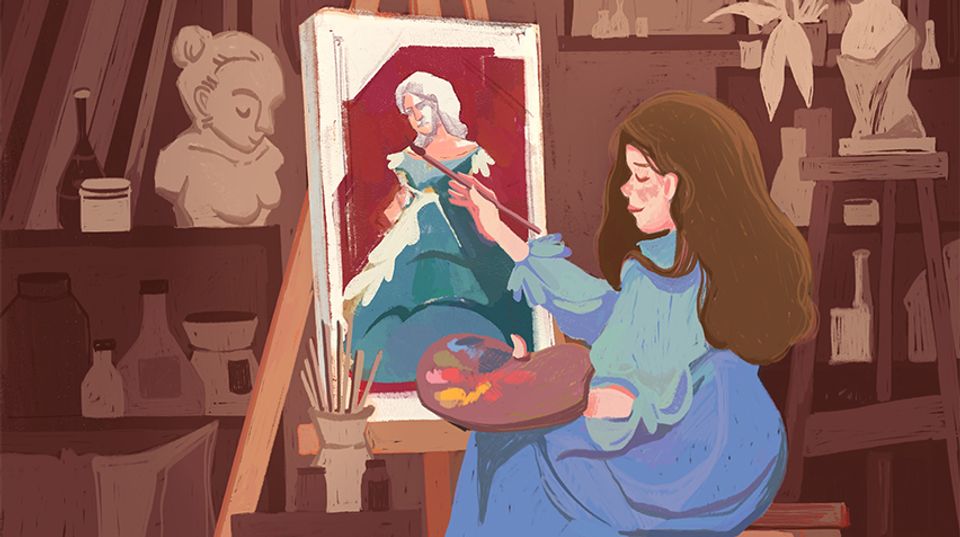Lilly Martin Spencer
- Also known as
- Lillie Martin Spencer
- Angelique Marie Martin
- Lilly Martin
- Lily Martin Spencer
- Lilli Martin Spencer
- Born
- Exeter, England
- Active in
- Highland, New York, United States
- Cincinnati, Ohio, United States
- Marietta, Ohio, United States
- Biography
Born in England, brought to Ohio in 1833, later moved to New York City. Her charming, sometimes sentimental paintings of domestic scenes were expertly done and quite popular among her contemporaries, but her reputation faded like the rose in her 1869 painting We Both Must Fade (Mrs. Fithian), part of the Smithsonian American Art Museum collection [1970.101].
Charles Sullivan, ed American Beauties: Women in Art and Literature (New York: Henry N. Abrams, Inc., in association with National Museum of American Art, 1993)
- Artist Biography
Lilly Martin Spencer supported a large family by creating images for the American public. Her wok achieved great popularity during the time when paintings and prints were first widely disseminated. Scenes of rural life, of children and animals, and of ordinary domestic events, executed in realistic detail and often relating amusing anecdotes or teaching lessons, appealed to Americans with money to spend on pictures and with a taste for the sweet and familiar. We Both Must Fade, [SAAM, 1970.101] a commissioned portrait, also serves as a meditation on the transience of earthly life.
The elaborately dressed sitter, surrounded by her finery in an ornate Victorian parlor, ponders herself in a mirror while petals from the rose she holds fall to the floor. Spencer fills the canvas with details, delighting in the depiction of the different textures and surfaces, from the blue fabric of the dress to the pin on the floor by the sitter's satin-slippered toe. She implies that none of the trappings matter because, like the drooping flower, the woman and her viewers will fade and wither.
Spencer began her career in Cincinnati, a bustling cultural center in the mid-nineteenth century. She had little formal training, as her descriptive style, with its hard outlines and colors and its sometimes awkward drawing, reflects. After moving to New York in 1848, she made a living for her husband and eight children by operating what may only be called a painting business, feeding the public's demand for the sentimental. Her husband left his work as a tailor to assist her and care for the children, giving her the necessary freedom from domestic responsibilities.
Elizabeth Chew Women Artists (brochure, Washington, DC: National Museum of American Art, Smithsonian Institution)
Related Posts

















